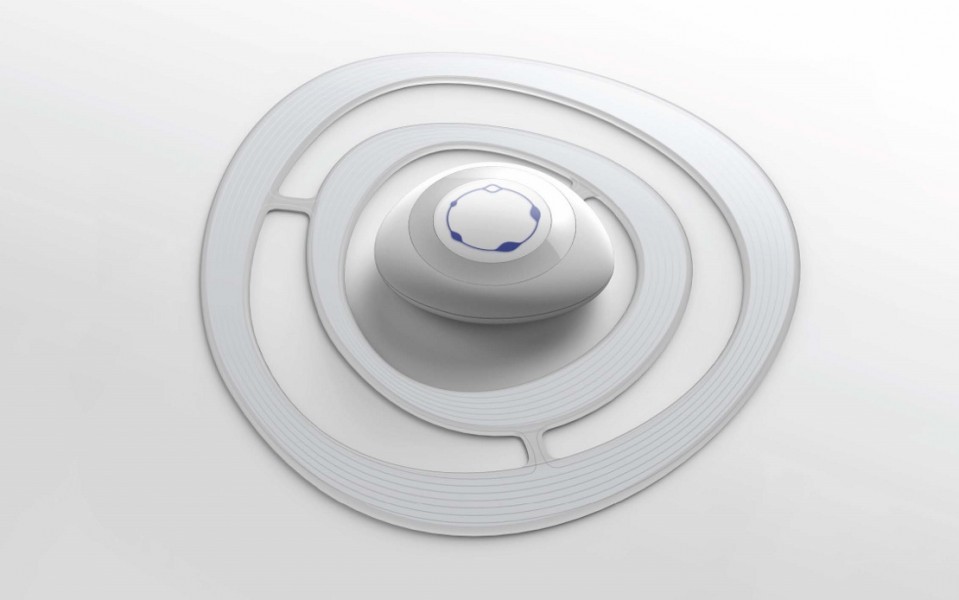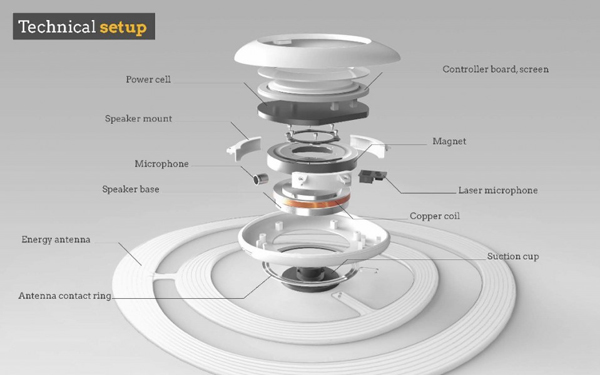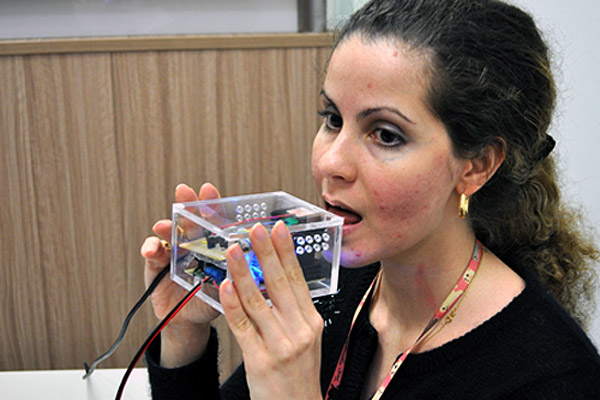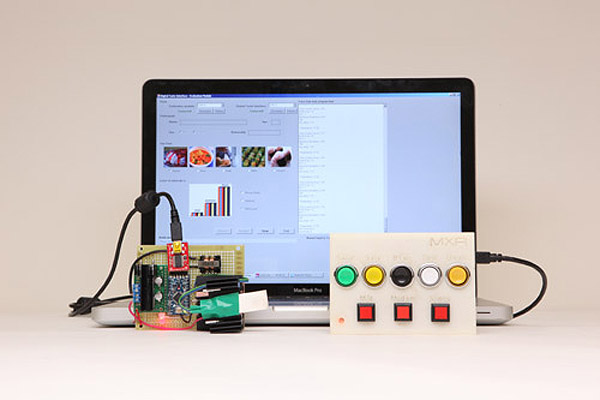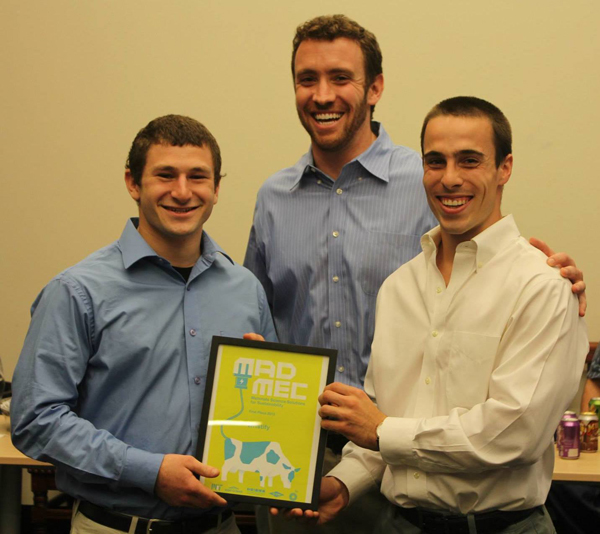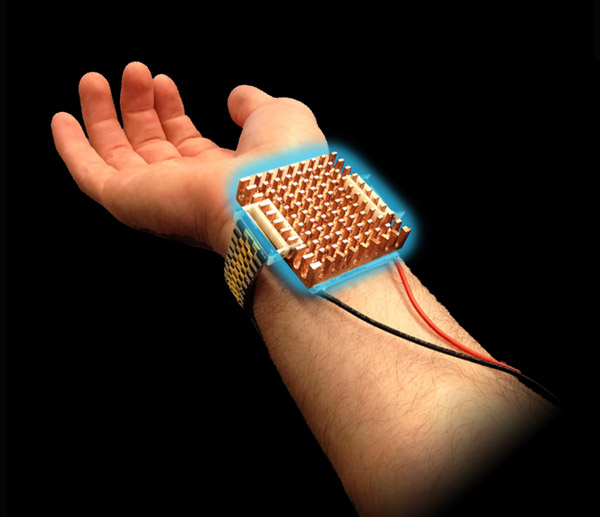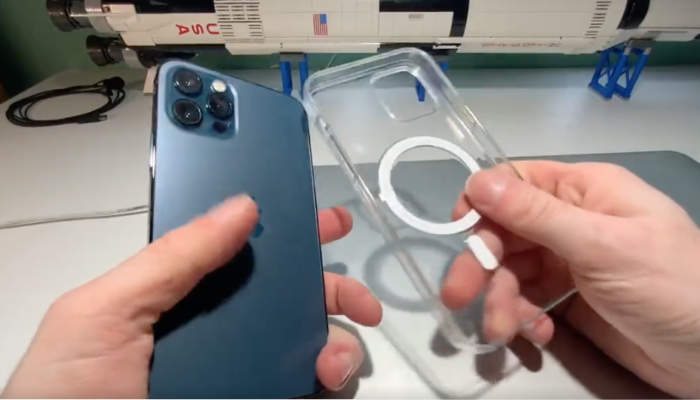We perceive the world through our senses and use technology to interact with it. This week we’re exploring three remarkable innovations that hope to move that relationship forward.
Noise-Cancelling Windows
Noise-cancelling headphones have transformed long-distance air travel. With a push of a button you can turn jet engines silent, make screaming babies disappear, and put chatty passengers on mute, it’s beautiful. Austrian inventor Rudolf Stefanich says he can add that same technology to your home. He’s created a disc-like product called Sono. When placed against a window using a suction cup it vibrates the glass, turning it into a large, noise-cancelling speaker. No more noisy neighbours, disruptive construction crews, or blaring car horns, just quiet.
It gets better. He’s added some extra tricks you won’t find on a pair of headphones. Sono can filter incoming sounds, blocking your neighbour’s barking dog, but allowing the birds in your backyard trees through. If you like the birds you can even amplify them and make them louder.
To avoid using batteries and power plugs, Stefanich is looking to add antenna rings that can absorb the electromagnetic energy of passing Wi-Fi signals and similar fields, allowing the Sono to remain powered on for longer periods of time.
How real is this? Rudolf Stefanich is a graduate student from the University of Vienna, but the princliples of his idea are sound (we have noise-canceling headphone and devices that can turn flat surfaces into speakers), but needs an engineering partner to turn his prototype into something that can be sold in a store. He was a top-20 finalist in this year’s James Dyson award, so let’s hope the attention gets him the partners he needs. I’ll buy one.
Digital Taste Messages
The food industry is always looking for ways to fool our taste buds. Farmers have learned that fruits with stronger aromas can seem juicier while beverage companies figured out that a drink can have a strong taste of lime just by giving it a green colour. Using a gold spoon will make food taste creamier while Miracle Berry Fruit Tablets can trick your tastebuds into thinking that lemons and other sour foods are some kind of delicious candy. The Holy Grail is to come up with a reliable and long-lasting way to make something taste sweet without using any sugar. In our health-conscious society, that would be the ultimate breakthrough.
Nimesha Ranasinghe at the University of Singapore has come up with a digital device that can simulate different tastes by hitting the tongue with a subtle mix of electricity and temperature. His “Digital Taste Interface” is a box with four buttons. Place your tongues into it and you can choose to have it zapped with sensations that are sweet, sour, salty, or bitter.
His research team is already hard at work on creating digital lollipops and taste-enhancing straws, but Ranasinghe says his ambition for the technology goes beyond the food industry. Instead, he hopes to pioneer the sharing of “taste messages” as part of the internet’s evolution. He points out that we are already sharing complex experiences online through GPS locations, biometric data, and wearable cameras designed to capture our full perspectives. Does sending someone a taste that could trigger a shared memory between two people really seem that far-fetched by comparison?
Wristify
Is it me or is it really cold in here? The answer, more often than not, is that it’s just you. We tend to experience two kinds of temperature – the accurate reading of a thermometer and then the “feels like” reading or thermal perception, referred to by weather reports. Our skin is so sensitive to tiny changes in temperature and our bodies work so hard to regulate it that you can feel colder or warmer than it actually is.
This can lead to thermostat wars where two people, one feeling cold the other warm, push the needle back-and-forth. Researchers at MIT calculate that just a 1 degree Celsius change to a building’s thermostat is enough to consume 100 kilowatt-hours per month. The extra cost means that some companies have had to put lock boxes on their thermostats.
Four MIT engineering students think they have a better idea. After months of doing experiments they found that if just one part of your body is different in temperature, such as having really cold hands, the rest of your body will try to adjust to match.
They’ve developed a thermoelectric bracelet that can send out cool or warm pulses through your wrist to take advantage of this effect. You’re feeling cold? Just trigger the bracelet to adjust your comfort level. A sweater might be too much, but the bracelet can be subtle enough to get it just right.
It’s called “Wristify” by creators Matt Smith, Sam Shames, David Cohen-Tanugi, and Mike Gibson. Their invention won them first prize of $10,000 at a MIT competition this past October and their hope is to either market it as a new product or, better yet, license it as a new feature for the wave of new smart watches being developed by Samsung, Apple, Google, and Microsoft. Imagine a watch that could adjust your personal temperature as well as display the time and in-coming messages?
They’re already working on their next prototype and estimate that it could be 1-2 years before we see it on store shelves.
“Buildings right now use an incredible amount of energy just in space heating and cooling. In fact, all together this makes up 16.5 percent of all U.S. primary energy consumption. We wanted to reduce that number, while maintaining individual thermal comfort,” says Sam Shames. “We found the best way to do it was local heating and cooling of parts of the body.”

